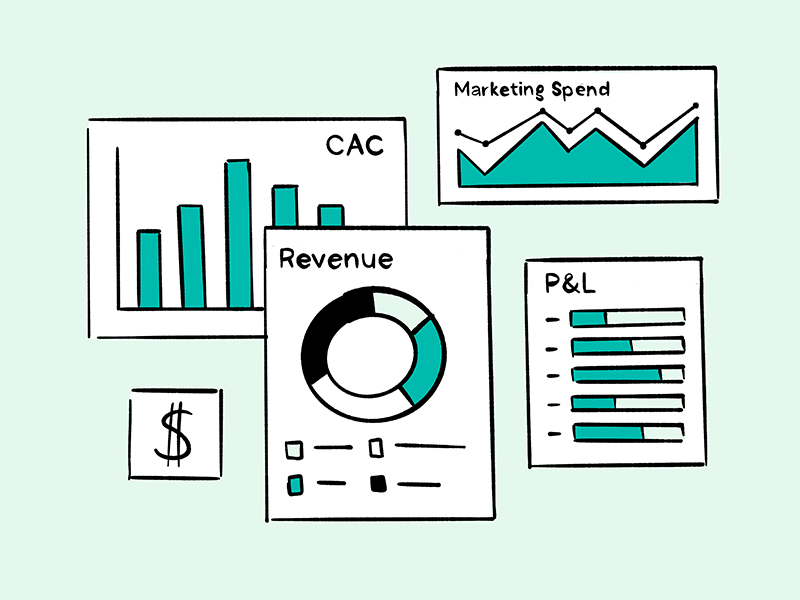Are you an early-stage founder? Check out more insights on pitching, leadership, financials, product, marketing and work from the BCV team in The Head Start.
I am yet to meet a founder who enjoys fundraising. Why would they? Their sole focus is on building a successful business, as it should be.
Fundraising for a startup is like making a pit stop for an F1 racer — you can’t go without it but you had better be lightning fast because it wastes precious time.
Knowing what investors are looking for, what metrics they care about and what data they’re likely to ask for can help not only speed up this process but also give founders ball control during the fundraise process, increasing the chances of a successful outcome. As with most things in life, preparation is key.
What’s on the typical investor’s diligence checklist?
The key caveat to any diligence checklist is that it depends entirely on how far a company is along its journey.
At the seed stage, you show investors the plot of land you’re planning to dig in and let them inspect your shovel. By series A, you have to show them that you hit gold. Once you become a growth-stage company, you have to demonstrate your ability to establish a profitable and scalable mining operation.
Very few companies have revenue or metrics to share at the seed stage. Investors at seed are typically underwriting the TAM and the team, so you have to let them hear your voice. Decks are the staple of course, but I’ve increasingly found long-form memos to be a very effective way of storytelling at seed. While telling your story, be sure to cover these bases:
- Big Idea – What’s the dream here and what’s your first step towards that dream? While the former needs to be bold and audacious, the latter needs to be grounded and achievable.
- Why Now – A good idea before its time is indistinguishable from a bad idea. Why is this the right time for your idea?
- Team – Why is this the right team to build this business? What about your backgrounds and experiences gives you an unfair advantage to win in this market? What drove you to start this company?
- Competitive Landscape – Who are you going to be up against? “We don’t have any competition” is never a good answer. You haven’t thought about the problem hard enough if you think so.
By Series A, however, there are hopefully signs that “something is working.” At this stage, the customer and their journey is central to your storytelling as investors are looking for signs that you accurately identified a critical customer pain point and are able to solve it in a way that becomes mission-critical for your customers, driving high willingness to pay and long-term stickiness.
By growth stage, you should have established product-market fit and show signs of a scalable go-to-market. A full data room request for a growth-stage company is likely to include the following:
- Latest board deck and/or company overview deck
- Historical and projected P&L, by month or quarter
- Revenue by customer by month over time
- Customer demographic information (vertical, size, geography, etc.)
- Customer engagement metrics (e.g., DAUs, MAUs, feature usage, time spent, etc.)
- Unit economics (e.g., LTV/CAC over time, payback period, CAC by channel)
- Sales metrics (e.g., funnel metrics, sales attainment, any other metrics that you monitor)
- Product roadmap overview
- Cap table
More often than not though, companies get drawn into processes before they had planned and investors pare down the initial data request to two key items: Historical monthly P&L and monthly revenue by customer over time. This data allows us to put together customer and revenue cohorts which help answer a very simple yet profoundly important question for any business — how likely is an acquired customer to stay and grow with you? Comparing that with the sales and marketing spend from the P&L gives us an idea of how efficiently the company is able to acquire these customers and grow the business. Taken together, we can get a sense of business health through the lens of LTV/CAC.
In my experience, you can tell a lot about the caliber of the company and the management team from the quality of the financial materials they share even without actually digging into the numbers. The best teams track their business at a granular level, showing great clarity of thought and a strong hold on the numbers. The data room itself can tell an investor a lot about how the business is being run.
Focus on the narrative
The first investor meeting should focus on the narrative instead of the numbers. Too often, I have been in first meetings with founders where they just rattle off numbers from a deck, missing an opportunity to really share their story. I can pore over the deck myself, but often have limited time with the founder and want to spend it understanding what they saw in the world that moved them enough to dedicate their life to solving that problem. A good investor pitch surfaces only the most relevant data in service of the broader narrative, leaving the investor to follow up for more information.
Founders should focus on telling a story about their business, explaining the need for the product, why it’s working and what their big vision is. Then, in service of that story, founders should surface the most relevant facts and figures for a proper introduction to the company. Serve your investors a curated charcuterie board of ideas instead of “anything-but-the-kitchen-sink” pasta.
If the numbers are bad, be honest
There’s only one way to deal with numbers that aren’t going in the right direction — upfront, with complete and dispassionate transparency.
Founders can put themselves in a tricky position by painting a very rosy picture during the diligence meeting and leaving the investor to find the bad news buried in the third tab of the financial model in the data room. Not only do you lose the chance to control the narrative, you also damage your credibility. In the worst case, the investor is left questioning founder judgment and wondering if they even understand that there’s a problem.
On the flip side, attacking any thorny issues head on shows that you are very dialed into the business, can identify and diagnose problems, and are focused on solutions. No P&L is perfect and every business is a work in progress — it’s the founder’s ability to handle challenges that matters more. In fact, founders should use this moment to test the investor and see if they have the experience to add value as a potential board member. Acknowledge your issue — say, for instance, you struggle with high churn given a focus on SMBs — and ask the investor what strategies have they seen be effective in dealing with this situation.
Avoid exaggeration
On a similar note, don’t inflate your metrics. While there are many judgment calls involved in presenting company data, you must ensure that you’re in line with general industry standards and disclose any difference in your assumptions.
Too often I see a founder who will, for example, use an artificially low base to calculate their net dollar retention. That never works! Any investor worth their salt takes the raw customer file and runs their own analyses. If a founder exaggerates, an investor is going to lose faith in everything they are saying, not just the exaggerated figures. It raises questions about management integrity. Don’t cherry pick specific numbers or time periods. It is much better to show the complete picture and then share explanations as needed.
Reputations, once formed, are very hard to shake in Silicon Valley.




